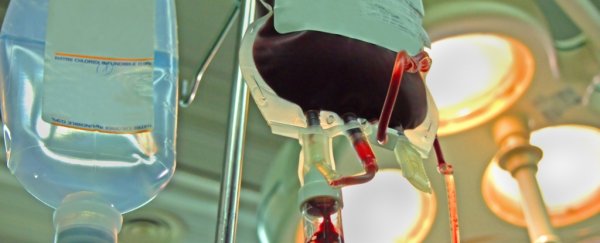Using just two tablespoons of blood, scientists have managed to grow a brand new blood vessel in a week - revolutionising the method used for creating new tissue with stem cells.
Three years ago, a patient who was missing the vein that connects the gastrointestinal tract to the liver received a blood vessel transplant grown from their own stem cells. Shortly after this case, the pioneering transplant was performed again on two young children, but this time, the stem cells were extracted from just two tablespoons of blood instead of from the bone marrow.
Until now, stem cells have been extracted from the bone marrow, as it is a rich source of the cells. However, the procedure is invasive and extremely painful.
"Drilling in the bone marrow is very painful," said Suchitra Sumitran-Holgersson, a professor of Transplantation Biology and lead author of the study, in a press release. "It occurred to me that there must be a way to obtain the cells from the blood instead."
The research and transplants were carried out at Sahlgrenska University Hospital in Sweden by Sumitran-Holgersson and Michael Olausson, a surgeon. Much to the researchers' surprise, the extraction procedure was successful on the first try and the new blood vessel worked perfectly after being implanted into the patients.
"Not only that, but the blood itself accelerated growth of the new vein," said Sumitran-Holgersson. "The entire process took only a week, as opposed to a month in the first case. The blood contains substances that naturally promote growth."
The results from the study that were published last week in EBioMedicine reported that a total of three transplants have taken place so far using this technique. The breakthrough gives researchers the ability to produce new blood vessels in a few days, avoiding the need for a painful bone marrow procedure.
"We believe that this technological progress can lead to dissemination of the method for the benefit of additional groups of patients, such as those with varicose veins or myocardial infarction, who need new blood vessels," said Sumitran-Holgersson. "Our dream is to be able to grow complete organs as a way of overcoming the current shortage from donors."
Source: EurekAlert
